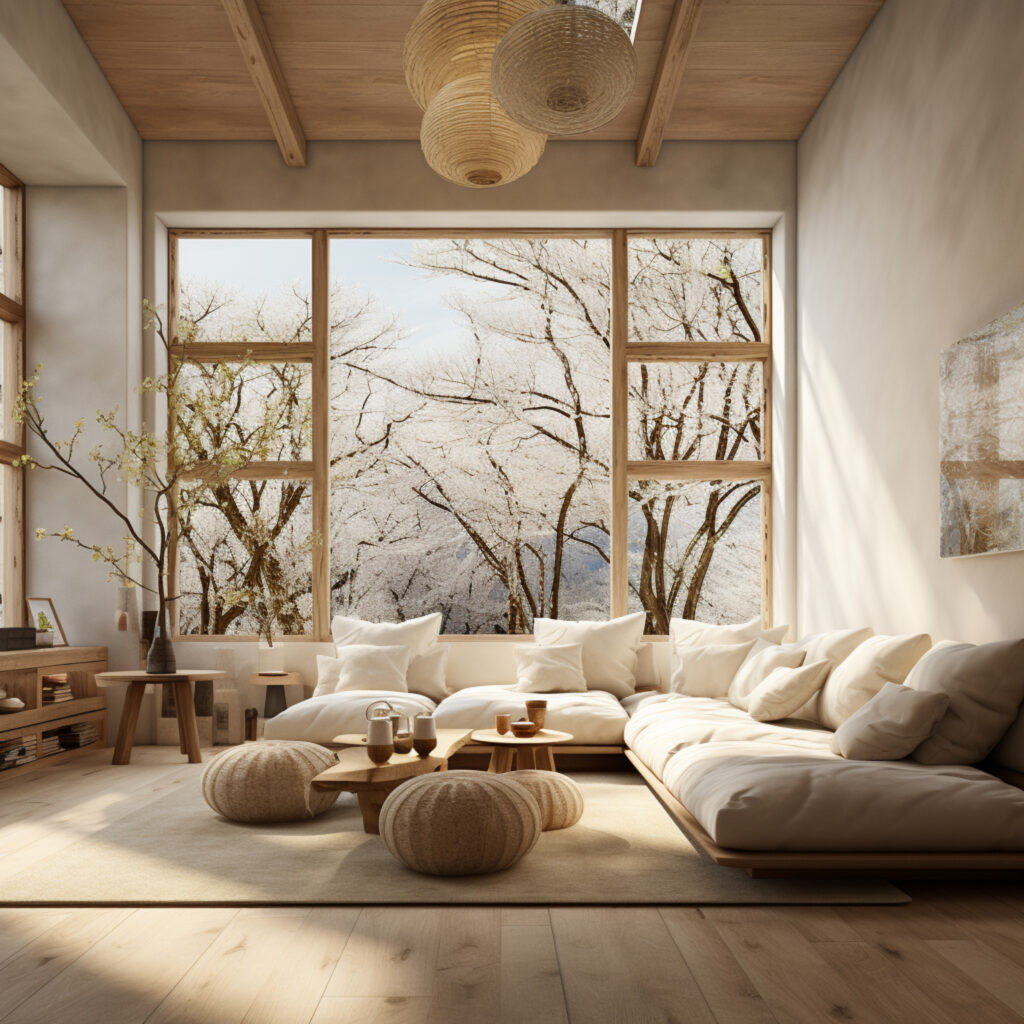Genel
Serenity and Simplicity: Japandi and the Essence of Wabi-Sabi
In the world of interior design, the fusion of Japanese and Scandinavian styles has given rise to a harmonious aesthetic known as Japandi. Rooted in simplicity, functionality, and a deep appreciation for nature, Japandi embraces the philosophy of Wabi-Sabi, finding beauty in imperfection and impermanence. Let’s delve into the serene world of Japandi and discover the essence of Wabi-Sabi.
Japandi: The Marriage of East and West
Japandi is a design movement that seamlessly blends the minimalist elegance of Scandinavian design with the timeless principles of Japanese aesthetics. This fusion creates a unique style characterized by clean lines, functional design, and a warm, natural color palette. At its core, Japandi embodies the idea that less is more, promoting a sense of calm and serenity in living spaces.
Key Elements of Japandi:
Neutral Color Palette:
Japandi interiors often feature a neutral color palette dominated by earthy tones, muted grays, and soft whites. This simplicity allows for a tranquil and cohesive atmosphere.
Natural Materials:
The use of natural materials is a fundamental aspect of Japandi design. Wood, stone, and bamboo bring warmth and texture to spaces, creating a connection with nature.
Functional Furniture:
Furniture in Japandi design is both functional and aesthetically pleasing. Clean lines, minimalistic forms, and multifunctional pieces contribute to the uncluttered look.
Balance and Symmetry:
Achieving balance and symmetry is crucial in Japandi interiors. This is often achieved through careful arrangement of furniture and decor items, creating a sense of order and tranquility.
Wabi-Sabi: Finding Beauty in Imperfection
Central to Japandi design is the influence of Wabi-Sabi, a Japanese philosophy that celebrates the beauty of imperfection, transience, and authenticity. Wabi-Sabi encourages an appreciation for the natural cycle of growth, decay, and the passage of time.
Key Principles of Wabi-Sabi:
Imperfection:
Embracing imperfections in design and decor, such as weathered surfaces or handmade items, adds character and authenticity to a space.
Simplicity:
Simplicity is key in Wabi-Sabi. Uncomplicated design and a focus on the essentials contribute to a sense of tranquility and mindfulness.
Natural Elements:
Incorporating elements from nature, such as branches, stones, or raw materials, enhances the connection with the natural world and reflects the impermanence of life.
Subtle Beauty:
Wabi-Sabi encourages an appreciation for subtle, understated beauty. It’s about finding joy in the modest and unassuming.
Creating a Japandi-Inspired Space
- Mindful Minimalism:
Opt for a minimalist approach in furniture and decor choices. Keep only what is essential to maintain a clean and uncluttered environment.
- Natural Textures:
Integrate natural textures like wood, linen, and stone to evoke a sense of warmth and connection with the outdoors.
- Handcrafted Elements:
Embrace handcrafted items and imperfect finishes to infuse a sense of Wabi-Sabi authenticity into your space.
- Balanced Symmetry:
Pay attention to the balance and symmetry of your arrangements. Create a sense of order without sacrificing comfort.
- Calm Color Palette:
Choose a calming color palette with muted tones and soft hues to evoke a tranquil atmosphere.
Japandi design, influenced by the philosophy of Wabi-Sabi, offers a sanctuary of simplicity and serenity. By embracing imperfections and focusing on the essentials, you can create a space that not only looks beautiful but also resonates with a deep sense of authenticity and harmony. Let the principles of Japandi guide you as you transform your living spaces into havens of timeless tranquility.


